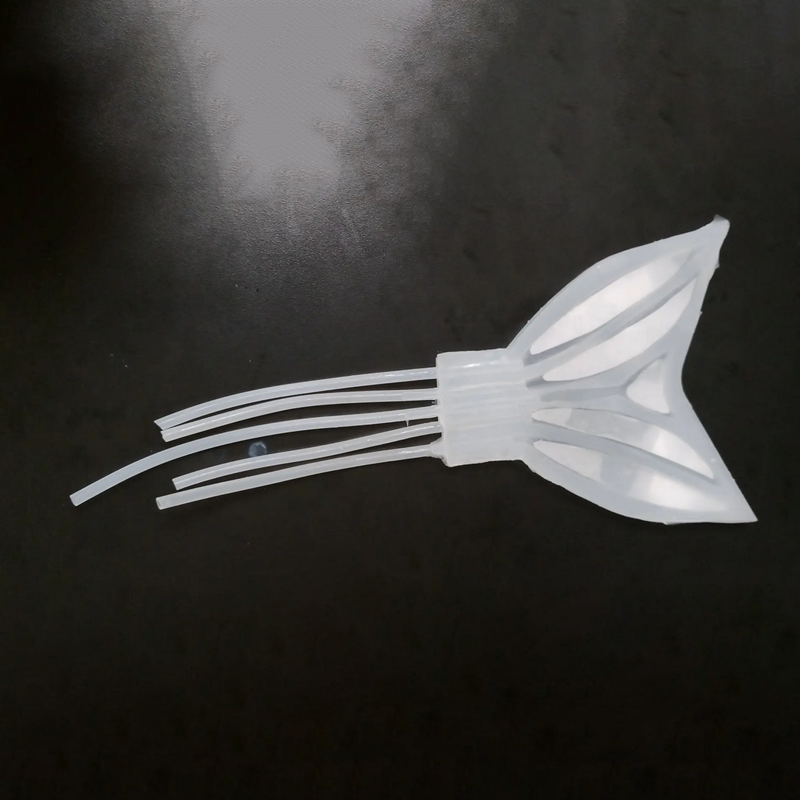News Story
Up & Coming — Sara Hewitt
By Tom Ventsias, University Publications
A 21-year-old graduate student in the A. James Clark School of Engineering is working to improve technology used to evaluate the key performance measures of large and complex systems. Known as discrete event simulation, the method is employed by engineers and designers as an integral part of the decision-making process to improve system performance.
Sara Hewitt, studying for a master of science degree in mechanical engineering, recently developed a computer interface that enhances commercially available discrete event simulation software. "What I am doing is trying to make the software more user-friendly," says Hewitt. Her graduate work is supported by a $30,000 fellowship provided by the Northrop Grumman Corp. and the Clark School's Institute for Systems Research.
Hewitt's research addresses one of the main concerns expressed by both students and professionals who use off-the-shelf simulation software; that is, the difficulty of finding specific information about system performance in the maze of variables produced during the simulation runs. "Simulation programs can be very useful, but they also can be somewhat time-consuming in terms of the amount of variables they can have," says Hewitt. She recalls her own early experiences with simulation software while an undergraduate in the Clark School. "At times, I would be looking for just one specific number, and would end up getting a seven-page output report," she says. "Or, I would want to look at the influence of one or two variables [on the performance of the entire system] and would have to do 30 or 40 simulation runs, with each run changing the one or two variables only slightly."
The interface Hewitt developed is written in Visual Basic programming language. It integrates commercial software for discrete-event simulation and data visualization, and gives users an easy-to-use, flexible way to see how key design parameters affect important output performance measures while conducting simulation runs. While the number of variables in a discrete event simulation can change depending on the size and scope of the system being analyzed, the new interface developed by Hewitt allows a systems engineer to focus on the critical subset of important variables.
Hewitt is conducting most of her research in the Clark School's Computer Integrated Manufacturing Laboratory, or CIM Lab. The lab investigates a wide variety of topics relating to design and manufacturing, including process planning, manufacturability, analysis, production planning and scheduling, manufacturing system design and system integration.
Last year, Hewitt-doing research as an undergraduate-compiled data concerning a factory on Maryland's Eastern Shore that produces metal and ceramic electronic packaging materials. The company has six high-volume products, and each had to go through at least six separate stages in the production process. Hewitt and other students in the CIM Lab constructed a discrete event simulation of the production process and made specific recommendations to the company regarding staffing and production control.
"This wasn't strictly an academic exercise," says Jeffrey Herrmann, associate professor of mechanical engineering with a joint appointment in the Institute for Systems Research. Herrmann, who advises Hewitt in her graduate work, is director of the CIM Lab. "The Lab was contracted for this project by the university's Technology Extension Service," he says. A component of the Clark School's Engineering Research Center, the Technology Extension Service offers at-cost, or no-cost, engineering solutions to Maryland businesses as part of the university's mandate to provide service to the state.
Hewitt was not proficient in computer programming before she started developing the interface, and says she basically taught herself the visual programming code. But she credits other graduate students in the CIM Lab, as well as students in the university's Human Computer Interaction Lab, for helping if she got stuck.
In addition to professional applications, the interface will be a useful tool for learning. Using the improved interface, students can see that by increasing the batch size (the amount of customers or parts arriving simultaneously), it increases production, but at a certain point, the system becomes saturated and everyone is working to full capacity. "Because you can visualize what is going on, you can see trends," Hewitt says, "and this helps you to more easily understand the relationships between various aspects of a complex system."
Reprinted from Maryland Research Magazine, Fall 2001
Published December 15, 2001









